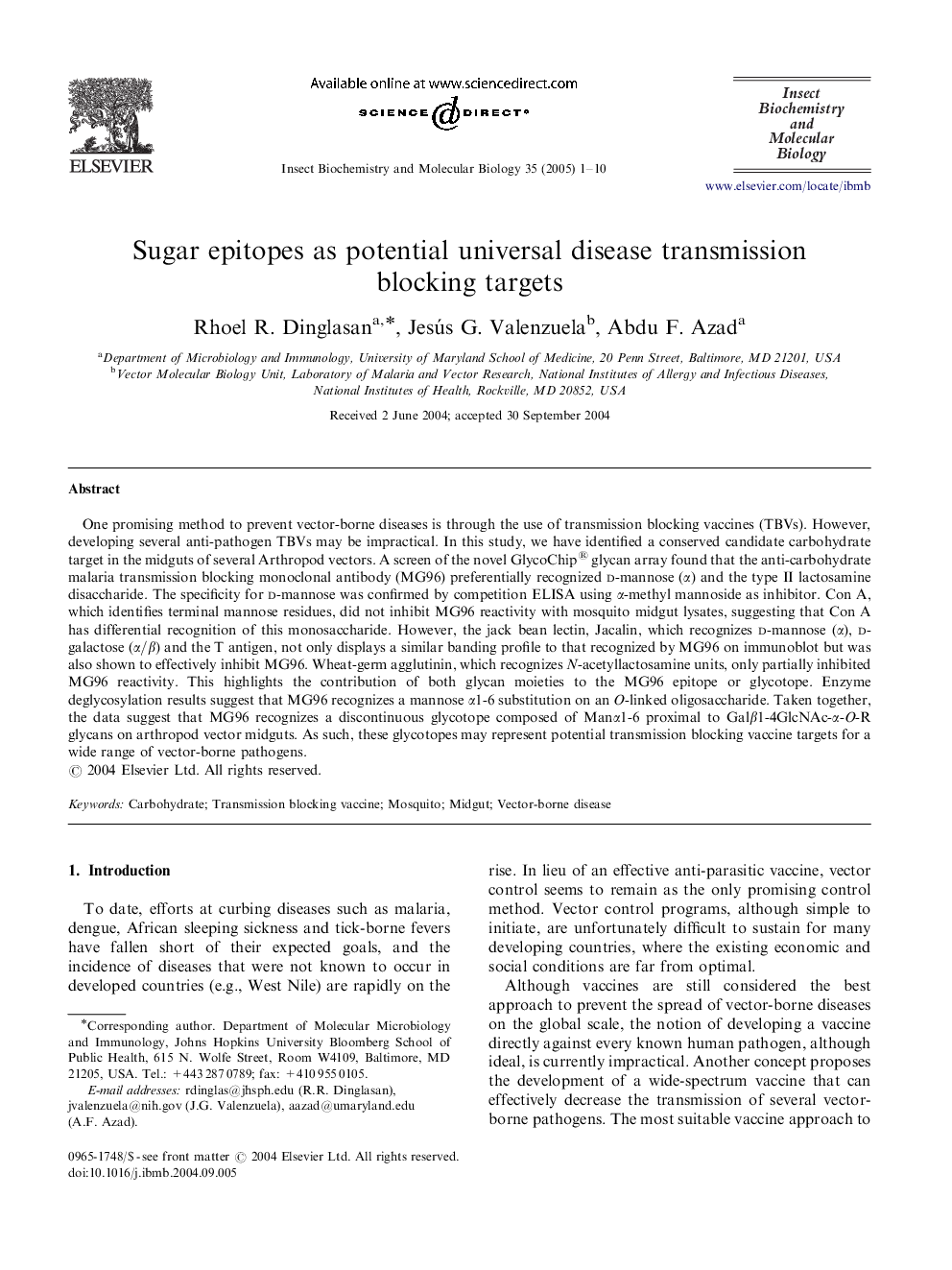| Article ID | Journal | Published Year | Pages | File Type |
|---|---|---|---|---|
| 10824485 | Insect Biochemistry and Molecular Biology | 2005 | 10 Pages |
Abstract
One promising method to prevent vector-borne diseases is through the use of transmission blocking vaccines (TBVs). However, developing several anti-pathogen TBVs may be impractical. In this study, we have identified a conserved candidate carbohydrate target in the midguts of several Arthropod vectors. A screen of the novel GlycoChip® glycan array found that the anti-carbohydrate malaria transmission blocking monoclonal antibody (MG96) preferentially recognized d-mannose (α) and the type II lactosamine disaccharide. The specificity for d-mannose was confirmed by competition ELISA using α-methyl mannoside as inhibitor. Con A, which identifies terminal mannose residues, did not inhibit MG96 reactivity with mosquito midgut lysates, suggesting that Con A has differential recognition of this monosaccharide. However, the jack bean lectin, Jacalin, which recognizes d-mannose (α), d-galactose (α/β) and the T antigen, not only displays a similar banding profile to that recognized by MG96 on immunoblot but was also shown to effectively inhibit MG96. Wheat-germ agglutinin, which recognizes N-acetyllactosamine units, only partially inhibited MG96 reactivity. This highlights the contribution of both glycan moieties to the MG96 epitope or glycotope. Enzyme deglycosylation results suggest that MG96 recognizes a mannose α1-6 substitution on an O-linked oligosaccharide. Taken together, the data suggest that MG96 recognizes a discontinuous glycotope composed of Manα1-6 proximal to Galβ1-4GlcNAc-α-O-R glycans on arthropod vector midguts. As such, these glycotopes may represent potential transmission blocking vaccine targets for a wide range of vector-borne pathogens.
Related Topics
Life Sciences
Agricultural and Biological Sciences
Insect Science
Authors
Rhoel R. Dinglasan, Jesús G. Valenzuela, Abdu F. Azad,
